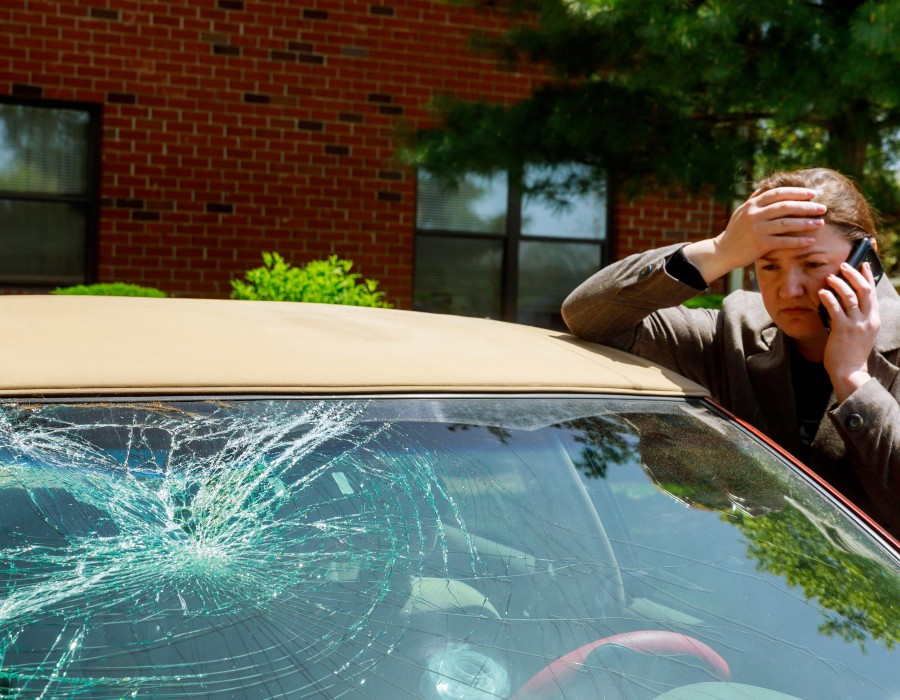Hailstorms can strike without warning, leaving your vehicle covered in unsightly dents and dings. If you're dealing with a hail damage car, you're not alone. Fortunately, there's a fast, cost-effective, and non-invasive solution—paintless dent repair. In this guide, we’ll explore how hail damages vehicles, why paintless dent repair is the preferred method for fixing the damage, and what to expect from the process.
Understanding Hail Damage on Cars
Hail damage is one of the most common reasons car owners seek dent repair services. Hailstones can vary in size, and even small ones can leave visible marks on the surface of your vehicle. These dents often affect the roof, hood, trunk, and doors, leading to decreased resale value and potential rust issues if left untreated.
What is Paintless Dent Repair (PDR)?
Paintless dent repair is a modern technique used to remove minor dents and dings from a vehicle's exterior without affecting the original factory paint. This process involves carefully massaging the metal back into place using specialized tools from behind the panel. Because no painting or fillers are needed, it’s an eco-friendly and time-saving method.
Why Choose Paintless Dent Repair for a Hail Damage Car?
There are several reasons why paintless dent repair is ideal for hail damage car restoration:
- Cost-Effective: PDR is generally more affordable than traditional bodywork because it requires less labor and materials.
- Faster Turnaround: Most hail damage repairs using PDR can be completed in a matter of hours or days.
- Preserves Original Paint: Since PDR doesn’t involve sanding, body fillers, or repainting, your car retains its original finish.
- Environmentally Friendly: No chemicals, paint, or fillers mean less impact on the environment.
How Does Paintless Dent Repair Work on Hail Damage Cars?
The process typically follows these steps:
- Assessment of Damage: A technician evaluates the hail damage to determine if PDR is suitable.
- Accessing the Dent: Panels are carefully removed or accessed to reach the backside of the dented area.
- Dent Removal: Using tools like rods and picks, the technician gently pushes and massages the metal back to its original shape.
- Final Inspection: The panel is checked from different angles to ensure a smooth finish.
What Types of Hail Damage Can Be Fixed with PDR?
PDR is highly effective for:
- Small to medium-sized dents with no paint damage
- Dents where the metal hasn’t been stretched
- Dents located in accessible areas such as the hood, roof, and doors
However, if the hailstones have caused chipped paint or sharp creases, traditional methods might be necessary.
Conclusion:
A hail damage car can look intimidating at first glance, but the solution doesn't have to be complex or expensive. Paintless dent repair offers a streamlined, non-invasive, and affordable way to restore your car to its former glory. It protects your car’s factory finish, saves time, and ensures long-lasting results. Whether your vehicle was caught in a mild storm or a full-blown hail onslaught, paintless dent repair is the smart, efficient choice.
FAQs
Can all hail damage be repaired using paintless dent repair?
Not always. PDR works best on dents that haven't damaged the paint or stretched the metal. For deeper or more severe damage, traditional repair methods may be required.
How long does paintless dent repair take?
Most PDR jobs for hail damage can be completed within a few hours to a couple of days, depending on the extent of the damage.
Is paintless dent repair safe for all car models?
Yes, PDR is suitable for most modern cars, regardless of make or model, as long as the damage falls within the repairable range.
Will the dents come back after PDR?
No, once properly repaired using PDR, the metal will remain in place. The dents will not return unless the car sustains new damage.
Does insurance cover paintless dent repair for hail damage?
Many comprehensive auto insurance policies cover hail damage and PDR. It's best to check with your provider for specific details.





Comments